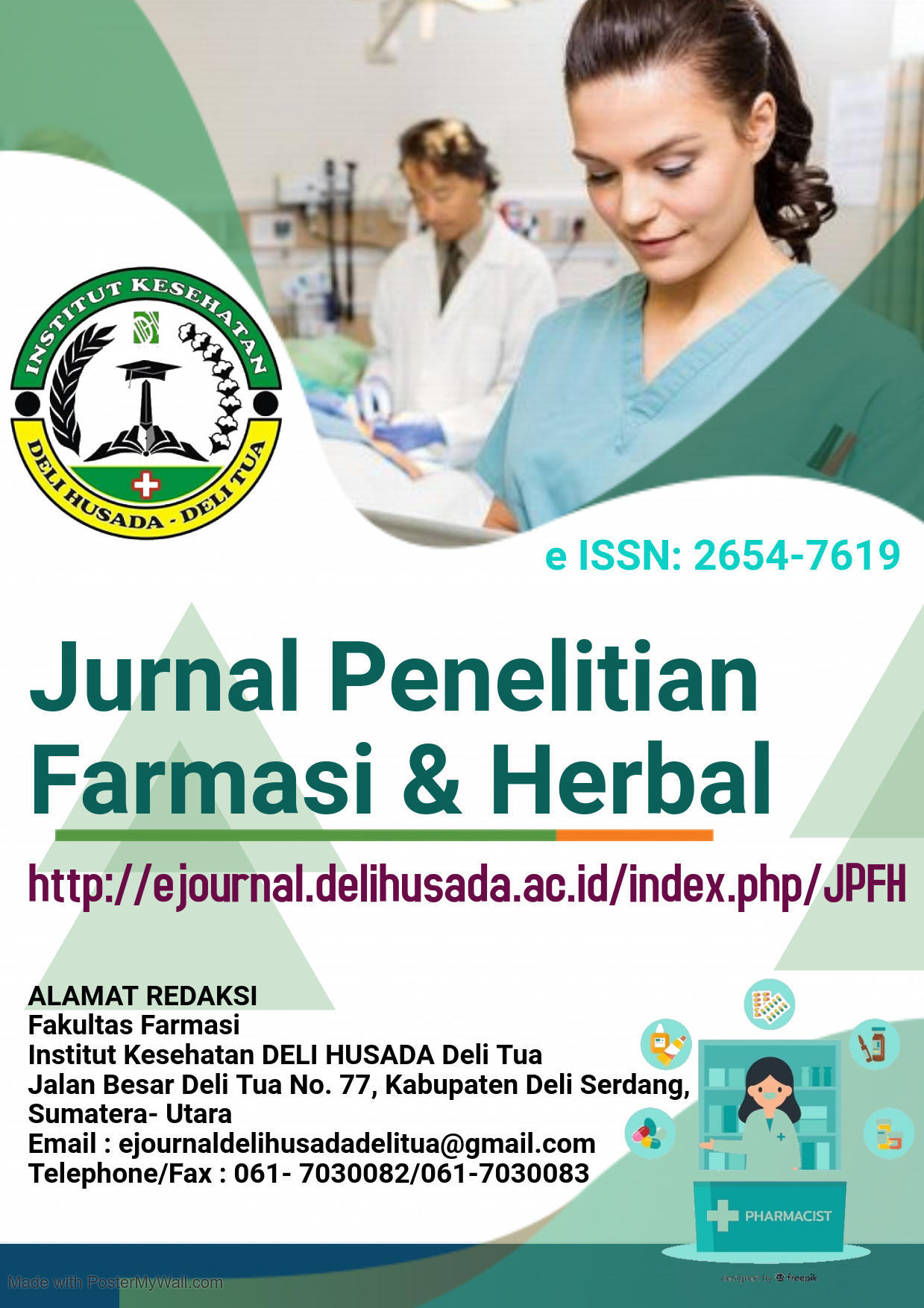PENGUJIAN EFEKTIVITAS PENYEMBUHAN LUKA BAKAR GEL EKSTRAK ETANOL DAUN TEMBAKAU (Nicotiana tabacum L.) PADA TIKUS
PENGUJIAN EFEKTIVITAS PENYEMBUHAN LUKA BAKAR GEL EKSTRAK ETANOL DAUN TEMBAKAU (Nicotiana tabacum L.) PADA TIKUS
Abstract
Tobacco leaves (Nicotiana tabacum L.) have secondary metabolites namely alkaloids as antibacterial, flavonoids and steroids / terpenoids as antimicrobials and adstringers which play a role in wound shrinkage, efficacious saponins stimulate collagen formation. This study aims to determine the effectiveness of tobacco leaf gel ethanol extract in the healing of burns. Tobacco leaf extract was prepared using a 96% ethanol immersion process. This study of tobacco leaf extract is prescribed in the form of gels at 5%, 10%, and 15% concentrations. There were five groups in this study. The first group (positive control), the second group (negative control), and the third group are tobacco leaf ethanol extract gels 5%, 10%, and 15%. In this study, 15 rats with burns on the backs of mice coated with the test preparation will be measured and photographed once daily. This is done until the wound is 0 cm in diameter or covered with new tissue. The data results of the mean wound healing rate data were statistically tested using the SPSS program. We analyzed the data using Oneway, ANOVA, TukeysB, and LSD to see the actual differences between the processes. The data results of the analysis on day 16 showed that the 15% tobacco leaf ethanol extract had a wound healing effect that was not significantly different from the positive control (Bioplasenton) (p> 0.05). cure burns that are comparable to comparable drugs (Bioplasenton). The conclusion of this study is that the most effective gel concentration is 15% with the day of recovery on the 16th day.
Downloads
References
Depkes RI. (2008), Farmakope Herbal Indonesia, Departemen Kesehatan Republik Indonesia, Jakarta
Hasyim, Kristian, L., Iradah, J., dan Ajeng Kurniati, (2012). Formulasi dan Uji Efektivitas Gel Luka Bakar Ekstrak Daun Cocor Bebek (Kalanchoe Pinnata L.) pada Kelinci (Oryctolagus Cuniculus), Skripsi. Makassar: Fakultas Farmasi Universitas Hasanuddin.
Ida, N., dan Noer, S.F. (2012). Uji Stabilitas Fisik Gel Ekstrak Lidah Buaya (Aloe Vera L.) Majalah Farmasi Dan Farmakologi. 16(2): 82.
Katrina S, (2014). Sehat dengan herbal nenek moyang, penerbit media ilmu abadi. Halaman 14,15
Kumar, D.et. al. 2010. At a Glance Sistem Kardiovaskular, Edisi III. Jakarta: Erlangga
Nida nabila nur. 2017. Buku Ajar Farmakologi Eksperimental. Jakarta : Universitas Indonesia.
Persada AN, Windarti I, Fiana DN. The Second Degree Burns Healing Rate Comparison Between Topical Mashed Binahong ( Anredera cordifolia (Ten.) Steenis ) and Hydrogel On White Rats ( Rattus norvegicus ) Sprague Dawley Strain. Jurnal Kedokteran Unila, Vol.2 No.2,2014 :1–10.
Rismana, (2013). Dibuat infeksi staphylococcus aureus, FMPIPA UNSRAT, Manado.
Suardi, Sukma; (2008). Perawatan Luka Dengan Pendekatan Multidisiplin. Edisi I. Yogyakarta. Halaman 134-140.







